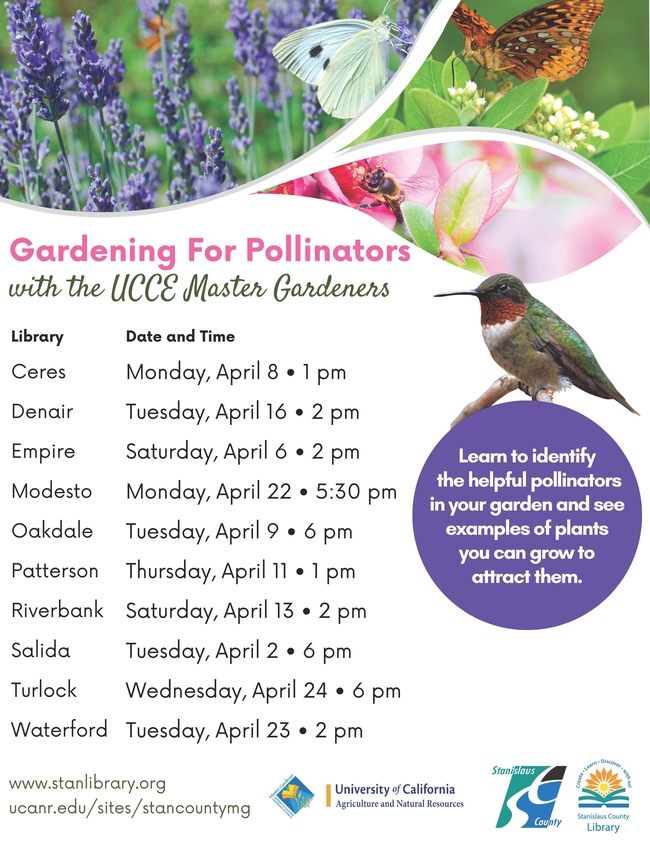- Author: Denise Godbout-Avant
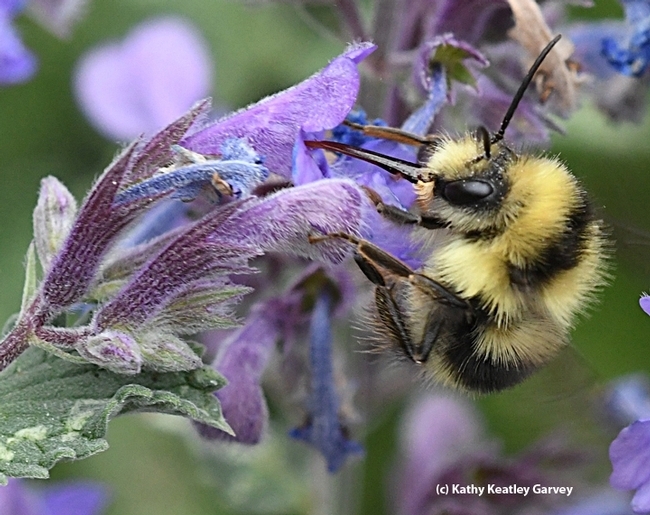
Bees are pollinators. Pollinators are crucial to the success of flowering plants by transporting pollen, thus allowing fertilization to occur. We would not have fruits and vegetables on our kitchen tables without them. They are vital to California's agriculture industry.
California's wide diversity of habitats supports a corresponding diversity of pollinators. Bees are the main pollinators with butterflies, other insects, and some birds such as hummingbirds also playing important roles. California has an estimated 1,200 – 1,500 native bees and over 200 species of butterflies.
What do Pollinators Require?
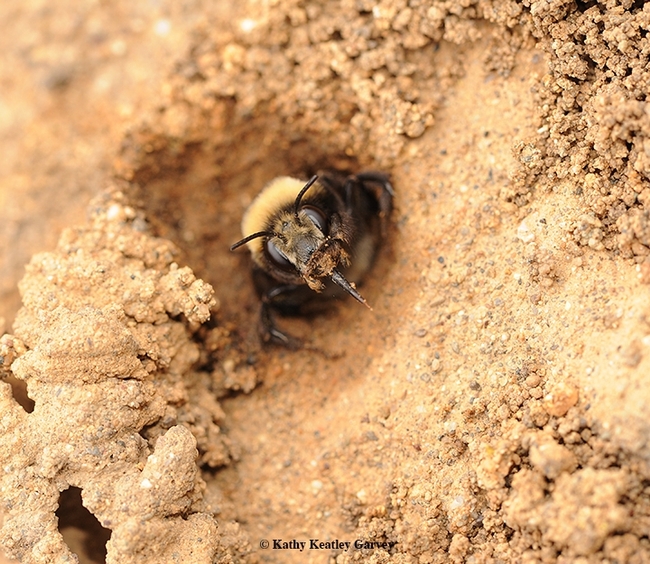
Due to climate change, the reduction of native habitats, and environmental chemicals, many pollinators are struggling. Providing plants in our gardens that attract pollinators can produce lovely, colorful landscapes while also benefiting pollinators.
Visit La Loma Native Plant Garden's Festival
You can see native plants that attract pollinators by visiting La Loma's Native plant garden on 1805 Encina Avenue in Modesto anytime. Or attend the Pollinator Festival, a free event held by the North San Joaquin Chapter of the California Native Plant Society on Saturday, April 13th 2024 from 10am – 2pm. Stop by the UC Cooperative Extension Master Gardener booth to see our insect collection and get a free packet of flower seeds.
The event will have a pollinator parade at 10:15, as well as face painting, music, food, and more! You can also hear from an entomologist on the importance of pollinators.
Learn More In-Depth Information About Pollinators at Library Talks
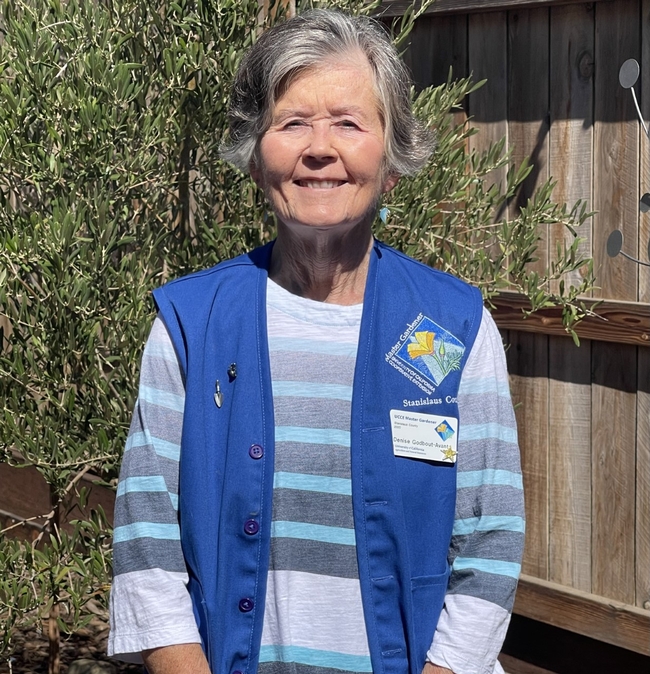
Denise Godbout-Avant has been a UC Cooperative Extension Master Garden in Stanislaus County since 2020.
- Author: Denise Godbout-Avant
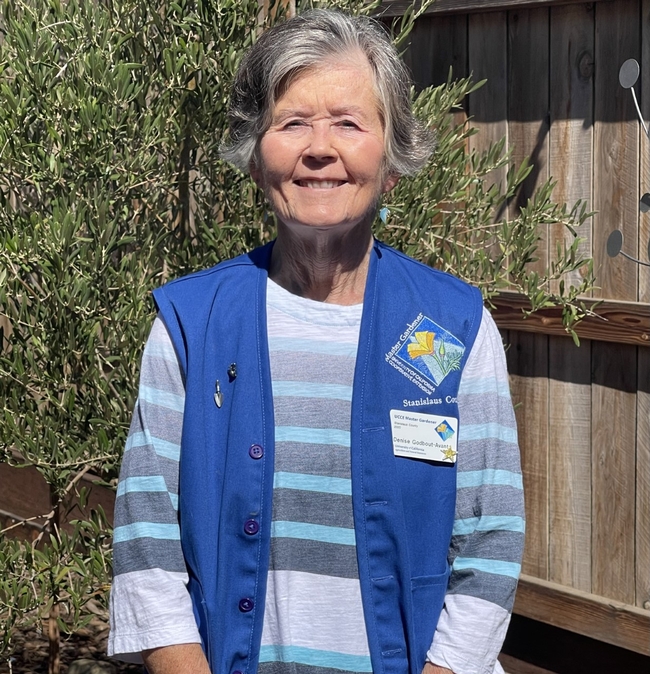
Pollinators that hang around our gardens include bees, butterflies, hummingbirds, beetles, and flies. While all these pollinators are important, bees make up about 50% of pollinators.
Native Bees Prominent Role
When you see bees in your garden, you likely see many European honeybees (Apis mellifera), who are crucially important to the Central Valley's agriculture since Honeybees pollinate 90% of the almond crop. But Honeybees are not the only bees in search of nectar in farmers' fields and our gardens. There over 4,000 species of native bees in the United States, with about 1,600 in California.
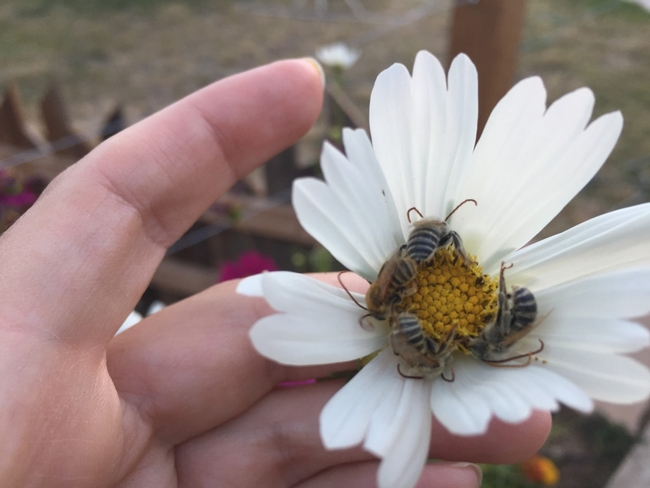
Native bees play an important role in pollinating our plants since they are 200 times more efficient at pollination than Honeybees. Studies in the Central Valley have shown three dozen or so native bee species provide sufficient pollination services for a single farm. For example, pollinating an acre of apples requires 60,000-120,000 Honeybees; the same area can be pollinated by 250-750 Mason bees (Megachile).
Social Characteristics and Nesting Habits
Most bees are solitary in nature, generally producing honey only for their own consumption and/or for their young. Nesting habits vary from social hives/colonies to solitary nesting in the ground or woody material.
- Social vs. Solitary bees:
o Solitary bees make up 99% of all bees in North America, with social bees making up less than 1%. Only Honeybees and Bumblebees are social, living in colonies, with all other bees being solitary. Most Honeybees are domesticated, living in hives. Bumblebees live in the wild, in colonies which are generally underground. Honeybee hives will have a population of 10,000-50,000 bees, while Bumblebees will have only 50-400 in their colonies.
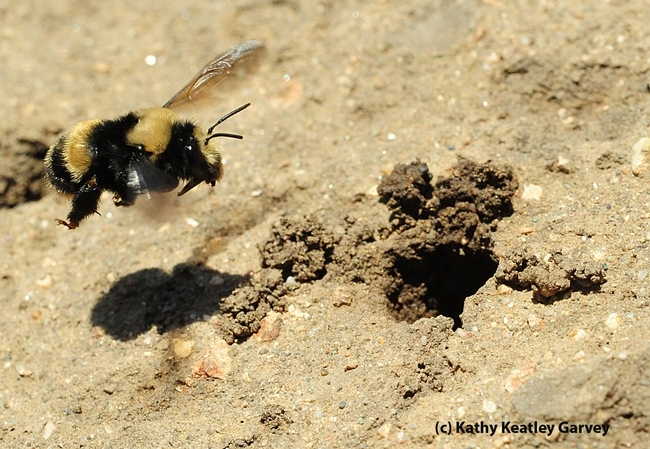
- Ground nesting bees make up 70% of bees:
o Mining bees and Digger bees (Adrena): As their names indicate, these bees have a ground-nesting lifestyle. From the outside, the tunnels look like holes with a ring of loose soil around them and can be mistaken for small ant hills or earthworm mounds. Mining bees are active only in the spring for 4-8 weeks during which the females dig tunnels to lay their eggs and raise their young. Both bees are extremely docile, rarely stinging.
- Stem and wood nesting bees make up 30% of bees:
o Leafcutter bees (Megachilidae) use a “wrapper” of leaves, resin, and sand to build their nests in natural or artificial cavities. If you see some leaves in your garden with their distinctive circular “cut out,” you will know you have some in your area. They are about the same size as honeybees, but their bodies are black and furry while Honeybees are dark brown to black and yellow striped.
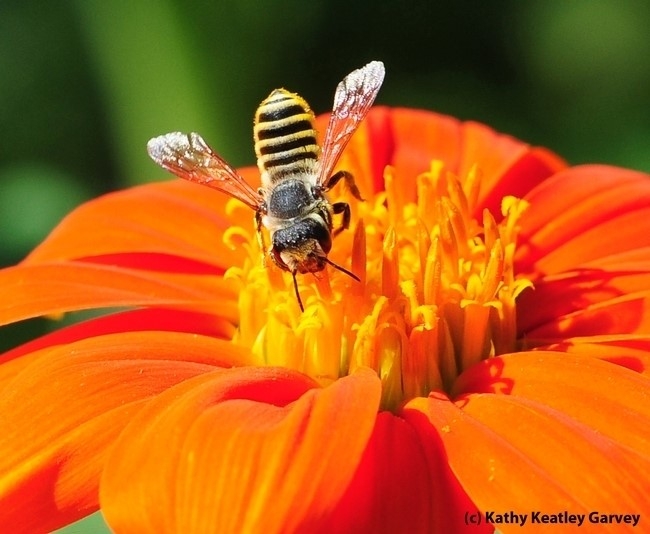
o Mason beesconstruct their nests from mud, preferring hollow stems or holes made by wood-boring insects. Some people hang bee “houses” with hollow tubes to attract these bees to nest in their yard.
Generalist vs. Specialist Bees
Some bees are generalists, getting their nectar from a wide variety of flowers. These include the Bumblebee and the Mason bee.
Other bees are specialists, feeding only from very specific flowers, such as the Squash bee (two genera: Peponapis and Xenoglossa) or the Sunflower bee (Megachile) with their common names indicating which type of flowers they favor.
Other Native Bees
Other bees you may see in your garden:
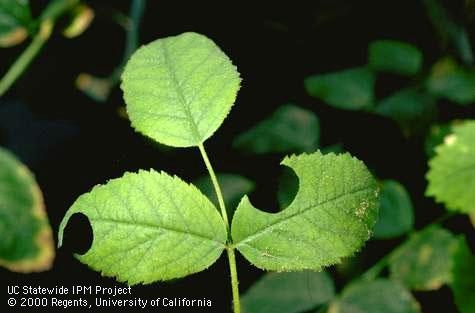
- Carpenter bees (Apidae): Females are shiny black and can sting, but only if provoked. Males are golden and can't sting. Their name derives from their nesting behavior; nearly all species burrow into hard plant material such as dead wood or bamboo. Occasionally they may nest in unpainted wood siding of buildings.
- Sweat bees (Halictidae): Sweat bees' common name is due to their tendency to land on and lick the sweat from people's skin! One of the coolest looking bees in this group is the green sweat bee, which has a shiny, iridescent exoskeleton. Most of these bees nest in the ground, though some nest in wood. Some species are cleptoparasites, meaning they will lay their eggs on food in another species' nest and after hatching, the larva kills the host's larva!
- Long-horned bees (Melissodes): With medium to large bodies, this non-aggressive group gets their names from the long antennae of the males, which females lack. Females have a solitary nest in the ground whereas males sleep outside, often spending the night in groups on the surface of a flower.
Bees are in Trouble
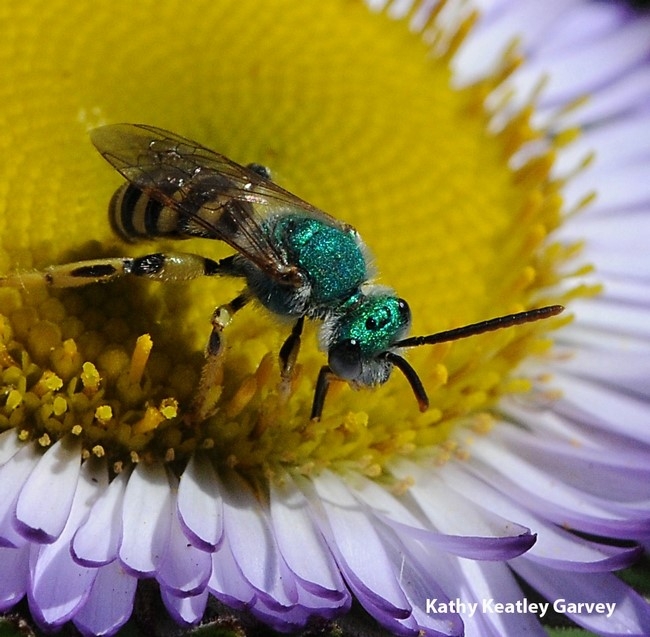
Some ways you can help:
- Plant a garden full of flowering plants to attract bees and other pollinators. Make sure you have something blooming during each of the spring, summer, and fall seasons. Whenever possible, plant native plants since native bees and plants evolved together.
- If you use a pesticide, choose one that is less toxic such as a horticultural soap or oil and spray in early morning or evening when pollinators are unlikely to be present. (https://ipm.ucanr.edu/GENERAL/pesticides_urban.html)
- Provide spaces for nesting bees, with bee houses and bare patches of soil, along with a source of water.
By providing a bee-friendly garden, you can help the vital native bee pollinators thrive.
Denise Godbout-Avant has been a UCCE Master Gardener with Stanislaus County since 2020
- Author: Denise Godbout-Avant
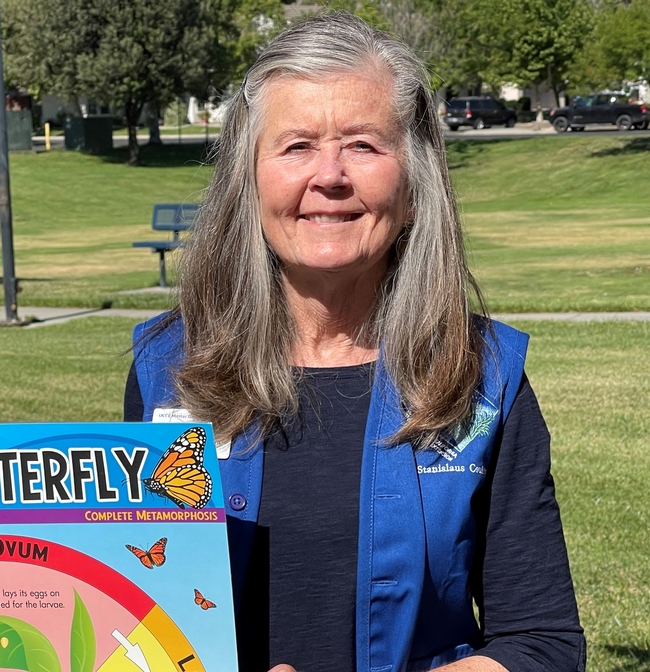
Plants
If you have the space, plant an oak tree! While it will take several years for the tree to mature, few plants provide more benefits to nature than an oak tree. One Valley oak tree can provide food, water, and shelter to approximately 350 vertebrate species and over 250 species of insects and arachnids.
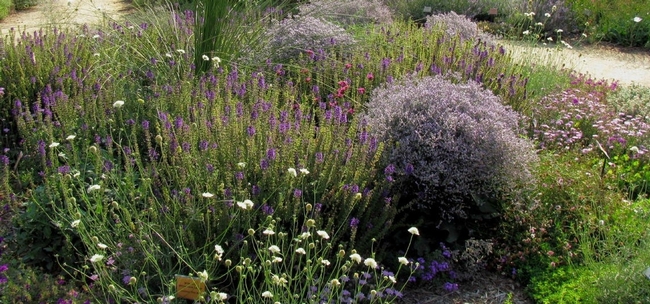
Choose plants that bloom at different times of the year, to ensure something is always blooming during the different seasons thus providing nectar sources year-round. Include some plants which produce berries to provide food sources attractive to birds and insects.
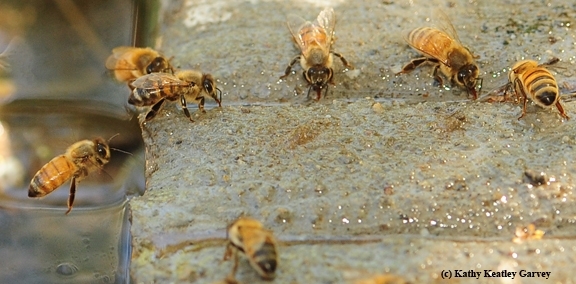
Lawns lack variety, thus reducing your lawn space and replacing it with native plants will increase the diversity in your garden. Decreasing the frequency of mowing permits grasses to grow taller, allowing flowers to grow and bloom which would attract bees and butterflies. You can also sprinkle some daisy and clover seeds into your lawn to provide forage plants and flowers for many beneficial insects.
Water
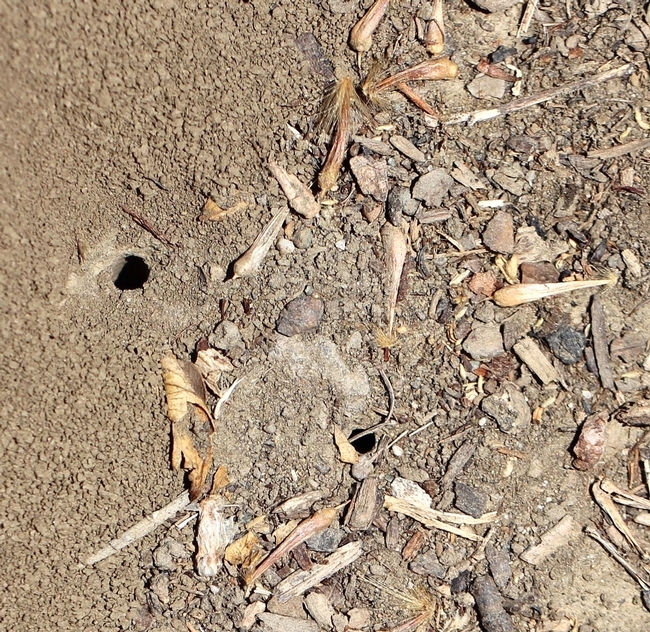
Ponds with aquatic-loving plants can encourage amphibians such as salamanders or toads, or wetland insects such as dragonflies, to visit and set up their homes.
Butterflies engage in behavior called “puddling,” where they stop in muddy puddles for water and nutrients. You can recreate this by filling a terra cotta saucer with soil and pebbles, sink it into the ground and keep it moist. Again, change the water regularly.
Plants and rocks around the water source(s) provide shelter, camouflage, and spots for creatures like butterflies, lizards, or turtles who like to sun themselves near water.
Housing for Bees
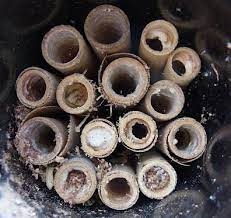
Leave the Leaves
Leaving leaves as they drop from your trees and bushes provides food and shelter for a variety of living creatures including worms, beetles, millipedes, larvae of some butterflies and moths, toads, frogs and more. These in turn attract birds, mammals, and amphibians that rely on the smaller organisms as a food source.
Chemicals
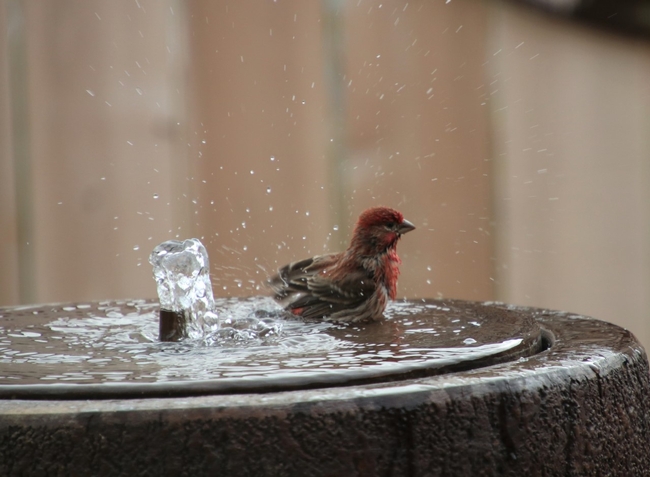
One Step at a Time
Changing your garden into a wildlife haven will likely be a step-by-step process over a period of time. Building a garden attractive to wildlife will bring you the enjoyment of watching them and the knowledge you are helping wildlife thrive.
Resources listed provide information for ways to you to build a garden attractive to wildlife.
- Butterflies in Your Garden: https://ucanr.edu/sites/CEStanislausCo/files/345791.pdf
- Sustainable Landscaping: https://ucanr.edu/sites/stancountymg/Sustainable_Landscaping/
- Trees in Your Garden: https://ucanr.edu/sites/CEStanislausCo/files/341553.pdf
- Pollinator-Friendly Native Plants Lists: https://xerces.org/pollinator-conservation/pollinator-friendly-plant-lists
- UC IPM Statewide Integrated Pest Management Program: http://ipm.ucanr.edu/
- The Bee Gardener: The Cavities You Want to Have: https://ucanr.edu/blogs/blogcore/postdetail.cfm?postnum=12785
- How to Make and Use Bee Houses for Cavity Nesting Bees: https://beegarden.ucdavis.edu/wp-content/uploads/2018/04/How-to-build-and-use-bee-blocks.pdf
Denise Godbout-Avant has been a Stanislaus County Master Gardener since 2020.
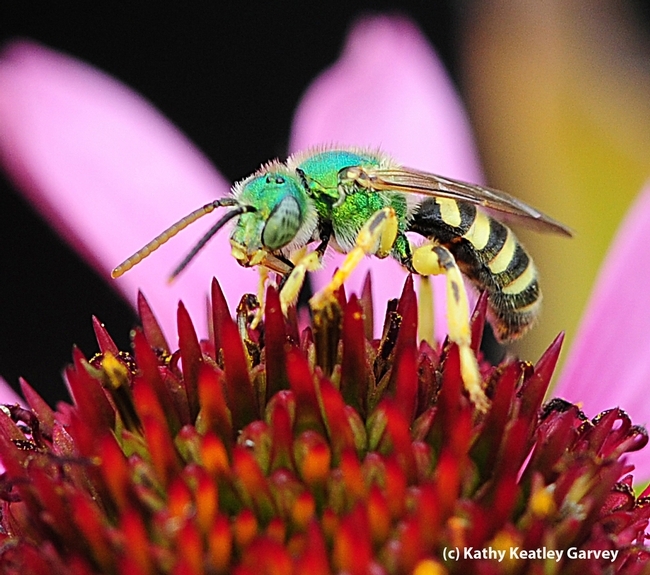
When: Tuesday, April 26, 2021 6:00-7:30 p.m.
Where: Harvest Hall Rooms D& E at the Agricultural Center at the corner of Crows Landing and Service Road in Modesto.
Address: 3800 Cornucopia Way, Modesto, CA 95358.
Cost: Free
Instructors: Master Gardeners Heidi Aufdermaur and Denise Godbout-Avant
Questions: call (209) 525-6862
Sign Up online: http://ucanr.edu/bees/2022
- Author: Denise Godbout-Avant
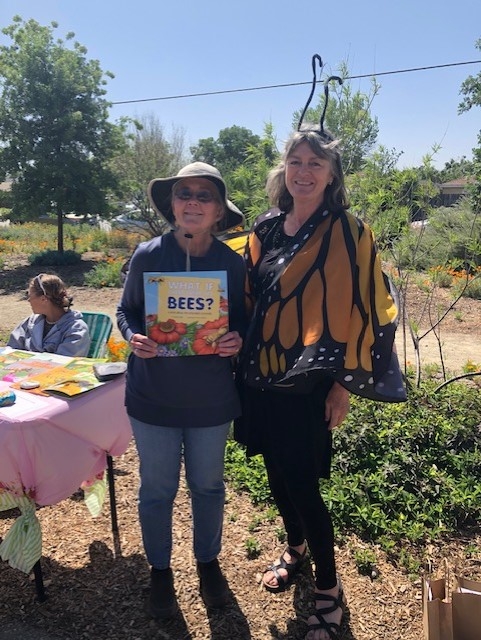
My teacher commented the deadline for doing the assignment was coming up and I wouldn't get an ‘A' in English if I didn't complete the project. I responded I didn't know of any science books to read. He suggested I go to the school library.
I told the librarian of my situation and she guided me to a book about honeybees. I liked bees (though I'd been stung once!) but knew little about them other than they spent time around flowers. That book revealed the complex and fascinating world of honeybees to me. I was enthralled. I have been enamored with bees and science ever since. I eventually obtained degrees in science and education which led to a worthwhile career that included being a biology instructor, museum educator and lab technician. All because of a book on bees. . .I am forever grateful to my 6th grade teacher and the school librarian.
All About Bees Talk
As a Stanislaus County Master Gardener, I have the privilege of joining fellow Master Gardener Heidi Aufdermaur in presenting a talk on “All About Bees,” to share my love of bees. Learn why they're so valuable, different kinds of bees, (there are over 1,600 native bees in California!), their life stages and habits, why they're in trouble, and how home gardeners can help bees thrive. I hope you'll join us!
When: Tuesday, April 26, 2021, 6:00-7:30 p.m.
Where: Harvest Hall Rooms D & E at the Agricultural Center at the corner of Crows Landing and Service Road in Modesto
Address: 3800 Cornucopia Way, Modesto, CA 95358
Cost: Free
Instructors: Master Gardeners Heidi Aufdermaur and Denise Godbout-Avant
Questions: call (209) 525-6862
Sign Up online: http://ucanr.edu/bees/2022
Denise Godbout-Avant has been a Stanislaus County Master Gardener since 2020.

